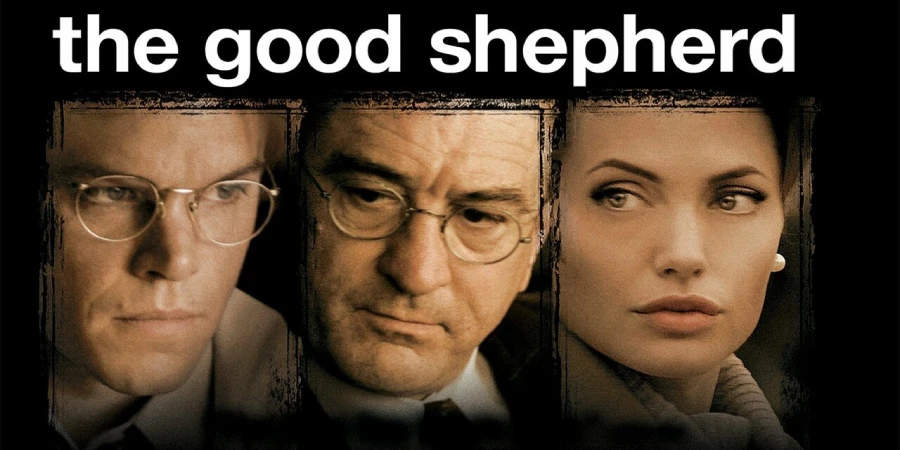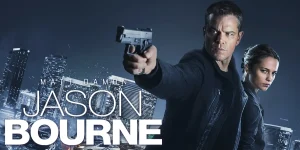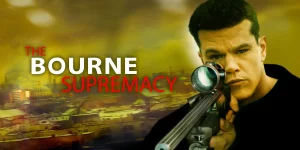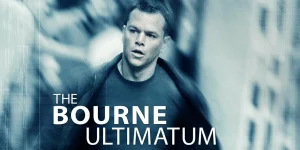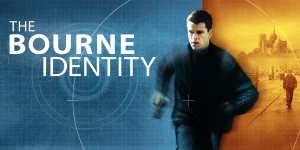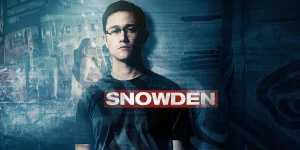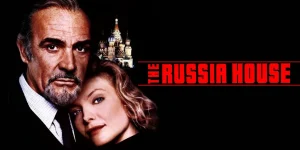The Good Shepherd (2006), directed by Robert De Niro, is a slow-burn espionage drama that takes a fictionalized but detailed look at the origins of the CIA. It’s part spy thriller, part psychological portrait of a man whose personal sacrifices mirror the birth of America’s modern intelligence community.
Table of Contents
ToggleDetailed Summary
The Early Years – Yale and Skull & Bones
The story follows Edward Wilson (Matt Damon), an intelligent but emotionally restrained young man at Yale. There, he’s recruited into the secretive society Skull and Bones, which acts as a pipeline into government service. His sense of duty and his belief in secrecy are established early, laying the foundation for his career.
World War II and the OSS
Wilson is soon pulled into the Office of Strategic Services (OSS), the precursor to the CIA. His academic background and loyalty make him an ideal recruit. During this time, he marries Clover (Angelina Jolie), not out of love but obligation after she becomes pregnant. Their cold marriage is one of the movie’s central emotional tragedies.
The Cold War Looms
After the war, Wilson becomes a founding member of the CIA. He quickly rises in influence, but his life is increasingly defined by mistrust, paranoia, and secrecy. His family relationships suffer: Clover grows bitter and lonely, and their son (Edward Jr.) feels neglected.
Betrayals and Paranoia
Throughout the movie, Wilson navigates a murky web of double agents, moles, and betrayals. Allies turn into enemies, and friends become liabilities. His loyalty to the agency eclipses his loyalty to his family. By the 1960s, he is one of the most powerful and feared figures in the CIA, yet also one of the loneliest.
Movie Ending
The ending of The Good Shepherd is grim and heavy with irony. Wilson’s son, Edward Jr., follows in his father’s footsteps and is recruited into the CIA. This decision devastates Clover, who blames Wilson for pulling their son into the same cold, joyless life.
Meanwhile, the central question of the film—who betrayed a CIA operation in Cuba—comes to light. Evidence points toward a leak, and Wilson, in his ruthless efficiency, uncovers that it was his own son’s girlfriend who was used as an unwitting informant. She is eliminated, though Wilson ensures his son is spared.
The final scenes show Wilson sitting alone in his office, surrounded by walls of surveillance equipment and files. His life is the embodiment of secrecy and control, but he has lost everything personal: his marriage, his chance at love, his ability to trust, and even his humanity. The last haunting image underscores the central theme: the cost of building an empire of secrets is the destruction of the soul.
Are There Post-Credits Scenes?
No, The Good Shepherd does not feature any post-credits scenes. The story ends definitively with Edward Wilson’s isolation, leaving the audience to reflect on the personal costs of espionage.
Type of Movie
- Historical spy drama
- Psychological character study
- Political thriller
Cast
- Matt Damon as Edward Wilson
- Angelina Jolie as Clover Russell Wilson
- Robert De Niro as General Bill Sullivan
- Alec Baldwin as Sam Murach
- Billy Crudup as Arch Cummings
- Michael Gambon as Dr. Fredericks
- William Hurt as Philip Allen
- Joe Pesci as Joseph Palmi
Film Music and Composer
The score was composed by Bruce Fowler, with additional contributions from Marcelo Zarvos. The music is subtle, often subdued, reflecting the film’s atmosphere of secrecy, unease, and inner tension.
Filming Locations
The film was shot in New York City, Washington D.C., and Connecticut, with some scenes also filmed in the Dominican Republic to double for Cuba. The locations were chosen to authentically capture both Ivy League elitism (Yale scenes) and the Cold War settings of Washington intelligence circles.
Awards and Nominations
- Nominated for an Academy Award for Best Art Direction.
- Won Silver Berlin Bear (Outstanding Artistic Contribution) at the Berlin International Film Festival (2007).
- Several nominations for performances and technical categories in smaller critics’ circles.
Behind the Scenes Insights
- Robert De Niro took almost a decade to get the project made, reflecting his personal passion for the subject.
- The script was heavily researched, blending real historical figures with fictionalized versions.
- Matt Damon lost significant weight to appear convincingly younger in early flashback scenes.
- De Niro recruited an ensemble cast of respected actors, many of whom accepted reduced salaries because they wanted to work with him.
Inspirations and References
The film is inspired by the real history of the CIA’s formation, with Edward Wilson loosely based on James Jesus Angleton, one of the CIA’s most notorious counterintelligence chiefs. The Skull and Bones society and the Yale connections are drawn directly from real-life elite recruitment practices.
Alternate Endings and Deleted Scenes
No official alternate endings have been released. However, several deleted scenes exist, including extended family moments between Wilson, Clover, and their son, which were cut for pacing.
Book Adaptations and Differences
While not adapted from a single book, the screenplay (by Eric Roth) drew inspiration from various CIA histories, including Thomas Powers’ The Man Who Kept the Secrets and works on Angleton. The movie condenses and fictionalizes these accounts into one central character, rather than presenting a direct biography.
Memorable Scenes and Quotes
Key Scenes
- Edward’s initiation into Skull and Bones, symbolizing the secrecy that will dominate his life.
- The chilling moment when Wilson listens to a recording of his wife’s affair, yet remains detached.
- The revelation of the Cuban leak, showing how espionage destroys personal lives.
Iconic Quotes
- “A lie, Mr. Wilson, is just another way of telling the truth.”
- “We’ll be judged by how we keep our secrets.”
- “Our fathers, they were the men who made the world. We are the men who protect it.”
Easter Eggs and Hidden Details
- The character of Joseph Palmi (played by Joe Pesci) is loosely based on real mobster Sam Giancana, hinting at CIA-mafia ties.
- The Skull and Bones society initiation scene uses some rituals reported in real investigative journalism about the society.
- The film’s title, The Good Shepherd, is both biblical (the shepherd who sacrifices himself for his flock) and ironic—Wilson “protects” America but destroys his family.
Trivia
- This was Robert De Niro’s second directorial effort after A Bronx Tale (1993).
- Joe Pesci came out of semi-retirement for his small but memorable role.
- The film runs for 167 minutes, and its deliberate pacing was divisive among critics.
- Angelina Jolie was pregnant during part of the shoot, influencing some of her wardrobe choices.
Why Watch?
Watch The Good Shepherd if you enjoy serious, cerebral spy dramas rather than action-packed thrillers. It’s for viewers who want to understand the human cost of espionage, the paranoia of the Cold War, and the psychological toll of a life built on secrets.

